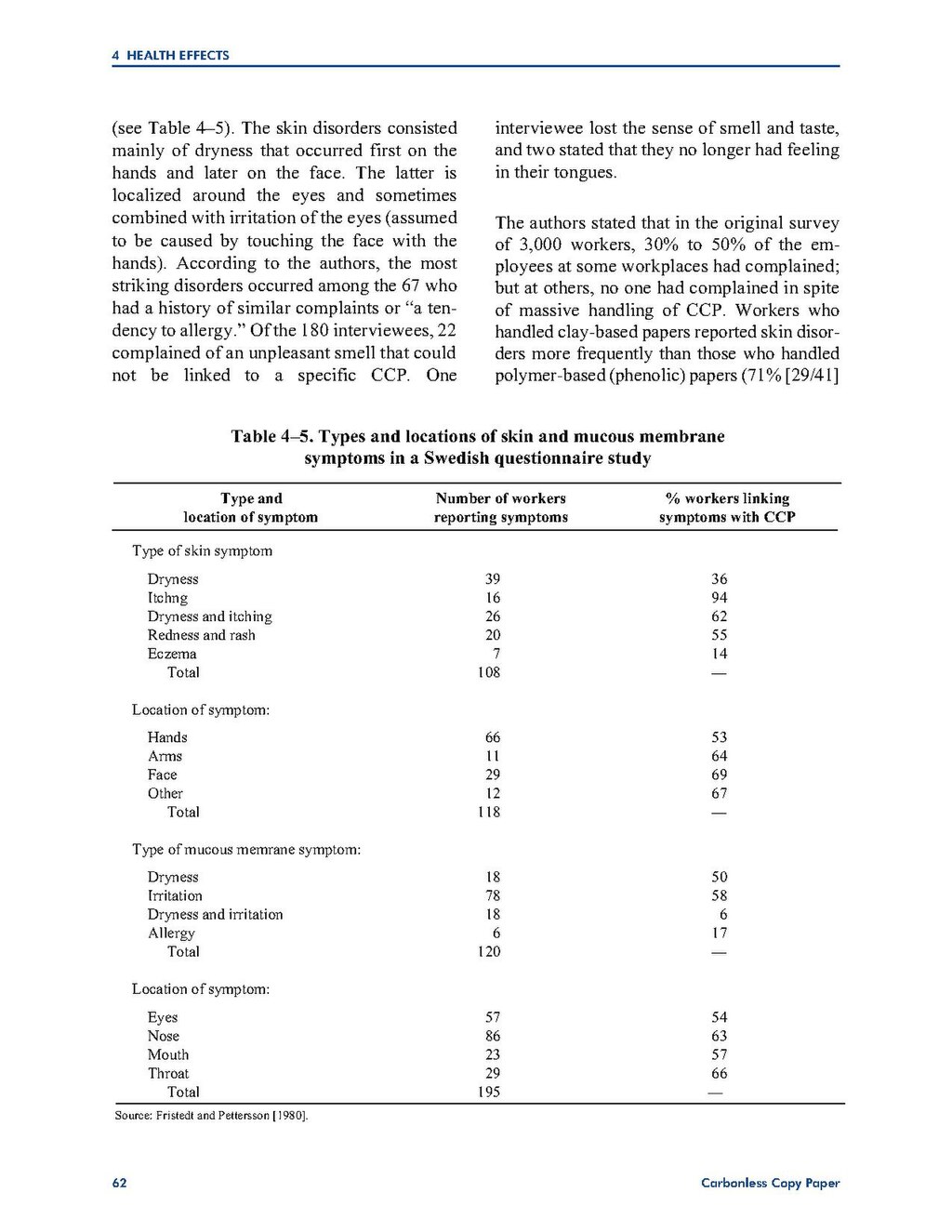(see Table 4–5). The skin disorders consisted mainly of dryness that occurred first on the hands and later on the face. The latter is localized around the eyes and sometimes combined with irritation of the eyes (assumed to be caused by touching the face with the hands). According to the authors, the most striking disorders occurred among the 67 who had a history of similar complaints or "a tendency to allergy." Of the 180 interviewees, 22 complained of an unpleasant smell that could not be linked to a specific CCP. One interviewee lost the sense of smell and taste, and two stated that they no longer had feeling in their tongues.
The authors stated that in the original survey of 3,000 workers, 30% to 50% of the employees at some workplaces had complained; but at others, no one had complained in spite of massive handling of CCP. Workers who handled clay-based papers reported skin disorders more frequently than those who handled polymer-based (phenolic) papers (71% [29/41]
| Type and location of symptom | Number of workers reporting symptoms | % workers linking symptoms with CCP | ||
|---|---|---|---|---|
| Type of skin symptom | ||||
| Dryness | 39 | 36 | ||
| Itchng | 16 | 94 | ||
| Dryness and itching | 26 | 62 | ||
| Redness and rash | 20 | 55 | ||
| Eczema | 7 | 14 | ||
| Total | 108 | |||
| Location of symptom: | ||||
| Hands | 66 | 53 | ||
| Arms | 11 | 64 | ||
| Face | 29 | 69 | ||
| Other | 12 | 67 | ||
| Total | 118 | |||
| Type of mucous memrane symptom: | ||||
| Dryness | 18 | 50 | ||
| Irritation | 28 | 58 | ||
| Dryness and irritation | 18 | 6 | ||
| Allergy | 6 | 17 | ||
| Total | 120 | |||
| Location of symptom: | ||||
| Eyes | 57 | 54 | ||
| Nose | 86 | 63 | ||
| Mouth | 23 | 57 | ||
| Throat | 29 | 66 | ||
| Total | 195 | |||
Source: Fristedt and Pettersson [1980].

